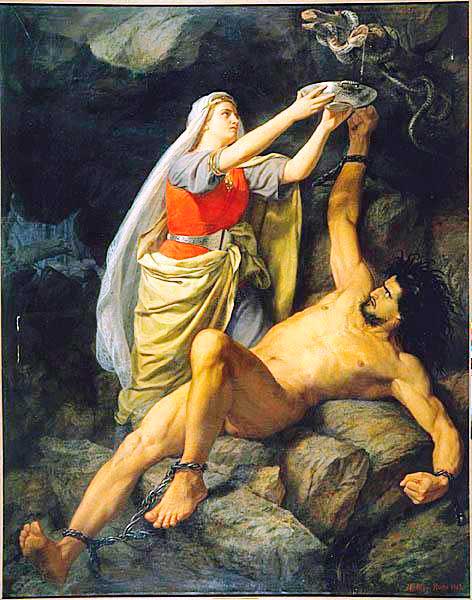Mårten Eskil Winge was a Swedish painter specialized in artworks that depicted Nordic history and mythology. The artist was greatly influenced by his compatriot, the painter Nils Johan Olsson Blommér. Born in Stockholm on September 21, 1825, Mårten Eskil Winge was the son of the rector and vicar Isaac Martin Winge and Andrietta Sophia Rothman. He received his education at the Cathedral School in Uppsala and became an apprentice to the painter P. E. Wallander in Stockholm in 1846. The following year, he enrolled in the Academy of Arts. While studying there, he worked at the post office and painted portraits to earn extra money.
During his youth, he became interested in the old Norse sagas, which led him to create elaborate drawings on the subject that caught the attention of others. Among other works, he illustrated Adam Oehlenschläger’s book Nordic Gods and the poems of the then Crown Prince, Charles (King Charles XV of Sweden), titled The Foster Brothers. Winge was drawn to the Gothic style of the 19th century, a Swedish movement influenced by national romanticism that aimed to reclaim the peoples of the Viking Era as ancestral heroes. Alongside his fellow student and friend, August Malmström, he revived Nordic legends and stories.

Mårten Eskil Winge
In 1856, Mårten Eskil Winge became a student of Johan Christoffer Boklund at the newly inaugurated painting school of the Academy of Arts. The following year, he received the Royal Medal for his painting of King Charles X. He also received a three-year stipend that allowed him to embark on a field trip from Düsseldorf to Paris. The benefit was extended for another three years. In 1859, he took a trip to Rome before returning to Sweden in 1863.
See also:
-
A arte nórdica de Peter Nicolai Arbo
-
Mitos eslavos e escandinavos por Igor Ozhiganov
-
Howard David Johnson e os Mitos do Mundo Antigo
In 1864, Winge became a member of the Academy of Art and, after various jobs as a drawing teacher, a university professor. In 1865, he opened a painting school in his studio and returned to Italy in 1877. Rome provided him with significant artistic experiences and inspirations. He married Hanna Matild Tengelin in 1867, a genre painter who also founded a crafts association.
Mårten Eskil Winge produced numerous paintings with Nordic legendary and mythological themes in the 1860s, which garnered much interest and approval. His first painting after returning to Sweden, Hjalmar’s Farewell to Örvar-Oddr after the Battle of Samsø, featured landscape collaboration from the then King Charles XV. His painting Thor Struggles with the Giants (1872), considered a “typical 19th-century image of the Thunder God,” was commissioned and purchased by Charles XV, who also acquired Kraka (1862). The painting is currently part of the Nationalmuseum collection in Stockholm, where Winge painted eight portraits of artists on the ceiling.
Starting from the 1870s, he received commissions to produce altarpieces for various churches. He also painted decorations for the Bolinderska Palace in Stockholm and Kulla Gunnarstorp Castle in Scania. In the final years of his life, he painted several seascapes with breaking waves on the coast. He passed away in Enköping on April 22, 1896.




